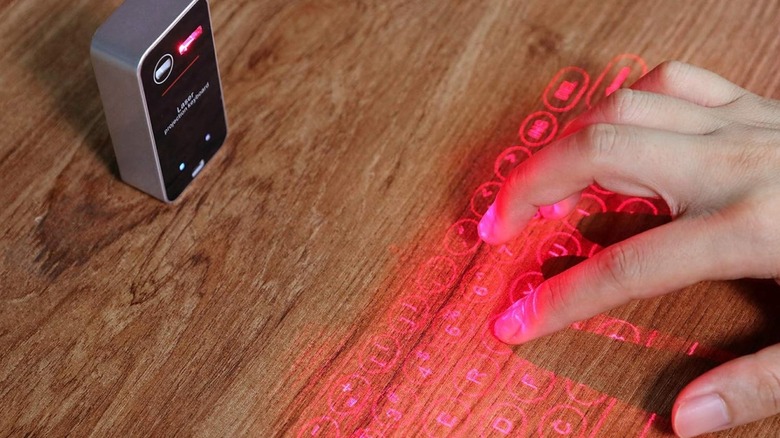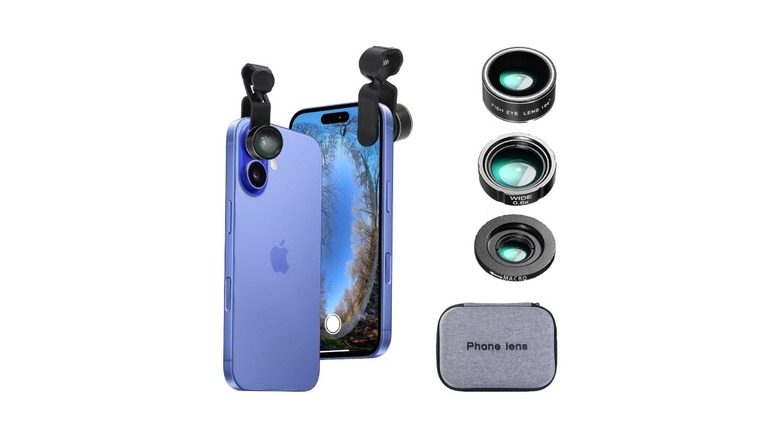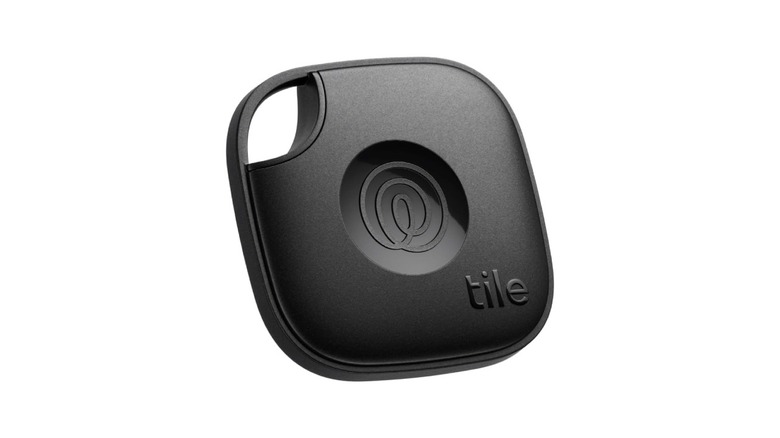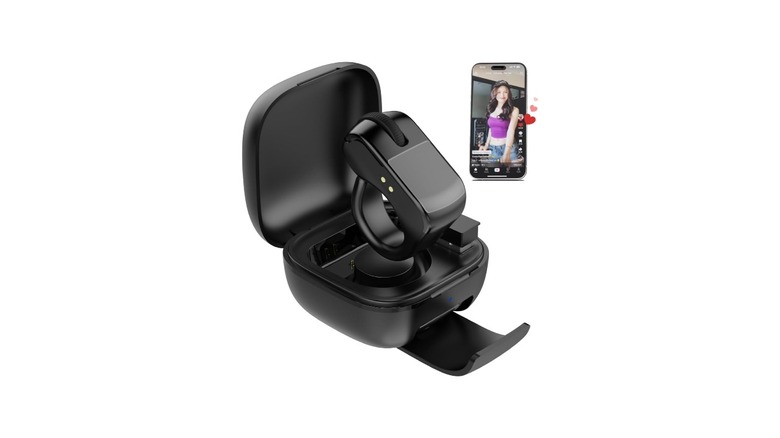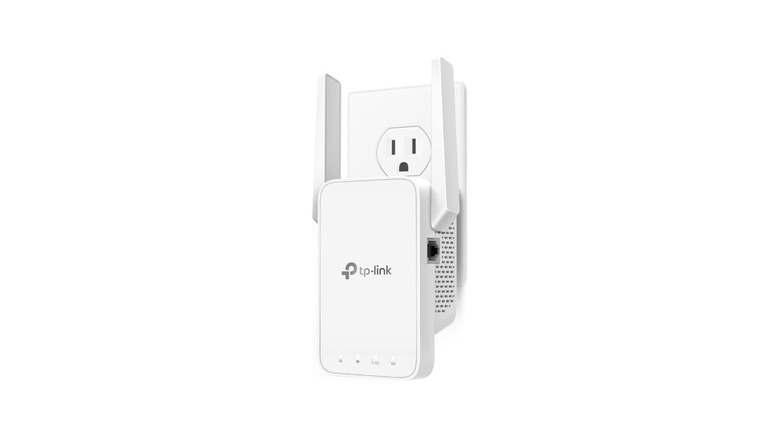5 Tiny, Palm-Sized Gadgets That Are A Big Waste Of Money
We may receive a commission on purchases made from links.
Electronic gadgets and devices are always enticing. They come in different shapes and forms and perform a wide variety of functions. Some gadgets, like smartphones, laptops, tablets, headphones, and smartwatches, have become inseparable from our lives thanks to the utility they offer across many areas. With the mass adoption of technology, the goal has always been miniaturization. Phones initially looked like bricks before becoming small enough to fit into trouser pockets. Similarly, wireless earbuds like the Apple AirPods have become more popular than larger pairs of headphones. While most tiny gadgets are super useful since they're portable and functional, that isn't always the case. This article highlights a few tiny gadgets that are a complete waste of money. The following list was selected after extensive hands-on experience with each product by the writer, ensuring that the evaluation goes beyond surface-level impressions.
At first, these gadgets may seem perfectly alright. Their functionality might make sense when looked at objectively. However, a closer look at what these gizmos do and how they do it reveals why they're pretty much useless. From camera attachments that promise to add an extra focal length to your smartphone to Wi-Fi extenders that claim to reach your home's basement, here are some tiny, palm-sized gadgets that are complete failures. Even though most of these gadgets are quite affordable, they're either not worth your money or have much better alternatives available in the market. Wherever applicable, we'll also suggest better alternatives to the products.
Phone camera lens kit
Once upon a time, smartphone camera lens attachments held immense value. Most smartphones a few years ago only came with a single camera — a primary lens with a standard wide field of view. With a camera setup like that, one would either have to take a few steps forward or backward in order to frame a scene properly. However, modern smartphones don't have that problem anymore. Most now feature double, triple, or even quadruple camera systems with a range of different focal lengths. You can zoom all the way to 100X with some of these cameras, and even zoom out to 0.6X for an ultra-wide view. With such powerful camera systems, an extra lens attachment like this makes very little sense.
These lenses generally add macro or fish-eye capabilities to your smartphone. They clip onto the existing camera and add a lens on top. While the idea sounds good, most smartphones nowadays — even budget phones — come with an ultra-wide camera by default. This renders the fish-eye effect useless, as it can be achieved natively. Additionally, many smartphones, like the iPhone 16 series, use the ultra-wide camera for macro photography too. Thanks to this, the macro attachment is also pretty much useless. Moreover, they degrade image quality, since the lenses are poorly made. So, it's best to stick to the default cameras on your smartphone to click photos at different focal lengths.
Bluetooth trackers without a relevant tracking network
Before Apple introduced the AirTag in 2021, the best way to track everyday items like keys, wallets, earbuds, etc., was using a Tile tracker. Tile was one of the first brands to launch a tracker that allowed users to find lost items by playing a specific sound from the tracker using the companion app on a smartphone. While the idea was genius, the biggest drawback of these trackers was that they only worked within Bluetooth range. Tile eventually built its own network consisting of other Tile users. If someone with the Tile app passed by a lost tracker, it would ping its last known location. However, Tile's network is still rather small, so the feature is largely useless compared to Apple's Find My network or Google's Find Hub network that utilizes Android devices.
This is the single biggest reason you should avoid buying trackers that don't run on Apple's Find My network, Google's Find Hub network, or Samsung's SmartThings Find network. These are among the most popular networks currently, so even if you lose your item, there's a good chance you may be able to track it and retrieve it. Many trackers that support these networks also include UWB support, which means you can use precision finding to locate the tags. If you're looking for a tracker for your wallet, bags, keys, or other such items, we recommend considering the Apple AirTag, Samsung SmartTag 2, or the Moto Tag.
Virtual laser keyboards
If you were active on the internet a few years back, you definitely would have seen this gadget making rounds on Facebook and Instagram. It's a laser holographic keyboard that projects a keyboard surface onto a table and lets you type by touching the relevant keys with your fingers. Essentially, the selling point of this gadget is that it can turn almost any flat surface into a full-blown keyboard. Naturally, the use case seems attractive for those who travel frequently and don't want to carry around a full-sized keyboard. The fact that the gadget is small and compact also helps its purpose. While it sounds like a useful gadget in theory, it's far from it in reality.
For starters, the layout is weird, making it difficult for regular typists to adapt to it when working. However, the bigger problem is the extremely poor sensitivity. Depending on the surface it's projecting on, you may have to press a key multiple times for it to register. That's definitely annoying when typing large documents. Some users have also complained that the device doesn't stay on for long, even when plugged in. While the idea is practical, the finished product is anything but. Hopefully, more brands can build on the concept and launch a version that truly works seamlessly. Until then, just pick up a physical keyboard or use the on-screen one on your smartphone or tablet.
Air scrolling ring
Short-form content has become extremely popular worldwide, thanks to platforms like TikTok, Instagram Reels, and YouTube Shorts. Most people scroll through these bite-sized videos whenever they have free time. The main reason is the wide variety of content one can consume in a short span, as opposed to watching a single long-form video on one topic. Since most short-form videos are around 30 to 60 seconds long, viewers constantly swipe across the screen to move to the next video. It seems like someone's fingers were hurting from this, so they designed a ring that can help you perform air gestures to scroll through short videos.
Even at its current sale price of $35.99 (down from $45.99), many may find it expensive for what it offers: pressing a button on the ring to scroll to the next video. Instead of doing that, you might as well swipe up on the screen. A fair argument would be that the ring allows you to scroll even when your phone is away from you. If that's the main goal, there are apps like Auto Scroll Reels that can automatically move to the next video as soon as one finishes. It's a free app that works without any external hardware. It even has a feature that automatically scrolls past ads. So technically, you're getting more functionality from a free app instead of spending $36 on a ring. In fact, the latest Instagram update even includes an auto-scroll feature, rendering the ring useless.
Wi-Fi extenders
When you move into a large house or apartment, a single Wi-Fi router is generally not sufficient to cover the entire space. If you place the router in the living room, you may not receive Wi-Fi signals in your bedroom or kitchen, especially if they're far away. A natural reaction to this is to pick up a Wi-Fi extender from a renowned brand. However, these extenders are generally quite bad, since they introduce several new issues while attempting to solve connectivity problems. The extenders work by receiving a Wi-Fi signal from the router and retransmitting it to increase the range. As a result, the bandwidth essentially gets halved. Along with that, they also introduce a significant level of latency, which is undesirable when gaming or attending a video call.
Then, there are other issues like potential interference, the need for manual switching in some instances, and placement challenges. Instead of wasting money on an extender that doesn't work as advertised, it's best to opt for a mesh network or a fully Ethernet-based solution if you're doing serious work like streaming, gaming, etc., and want an uninterrupted connection. If you use multiple computers spread across different rooms, you can also route Ethernet cables through multiple outlets so that all of them have a stable connection. For other devices like smartphones, tablets, TVs, and IoT devices, you can continue using a standard Wi-Fi router.
